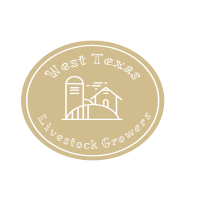 Imagine an ideal scenario: just one type of mineral would solve all of your problems. You could just put it out, forget it and your cows would be at the peak of health.
Imagine an ideal scenario: just one type of mineral would solve all of your problems. You could just put it out, forget it and your cows would be at the peak of health.
Despite how good that would make you feel I hate to be the bearer of bad news put that type of scenario just doesn’t exist here in the real world. Here there is no such thing as a “perfect” mineral program.
Though such a thing may not exist, there are some common-sense approaches that you can make to improve the one that you already have. All it requires is a little effort on your part and some proper planning to make it as efficient as possible. Here are some tips you can consider:
Are you wasting the mineral?
A producer’s mineral program is often severely underestimated or just underappreciated part of their operation. This is usually the case in a free-choice scenario. Often times it just put out and they don’t pay it any more mind.
Poor management of your mineral can lead to a compromised mineral program. This would cause improper intake, excess waste, increased cost, and also could include poor cattle performance. All in all a compromised program will be just a waste of money.
Now here is where we get to improving your program
1.) Keep it simple
There are various formulations of minerals out there. Now customization may be nice it usually is not necessary in many cases. It is not cost effective and completely unnecessary 9 times out of 10.
A well-balanced supplement that uses quality ingredients will do what you want if it is fed properly. The key to look at is if it will fill in the gaps of what you need. A higher percentage may be completely unnecessary.Many times all the talk of percentages is just a sales pitch to get you to buy something that you do not need.
Now you may be asking “what percentage should I be looking for?”. Though it is different for different regions L.W. Greene with the Texas A&M University system recommends like a 12 to 16% Ca, 4 to 8% P, and 2 to 4% Mg as a base supplement for warm season forages.
The thing that you want to do is look at what it is that you need then make your purchase based on that.
2.) Follow the directions on the tag
You could have the best product in the world but if you do not have the right amount then it does you no good. You should have the right amount for the number of animals that you have.
Just like figuring out the amount of bunk space, the number of mineral stations that you have will affect how well the cattle are consuming it. If you have too few then not every animal will be able to consume the amount they need. You will also waste a lot of it if you have too many. You should read the feed tag and see the amount that is recommended for each unit.
Location of the mineral is also as important. Placing it near water or loafing areas will encourage consumption. Moving it away from the areas will also reduce intake.
Once the cattle are used to the tubs you can move them to other locations in order to promote better grazing distribution. I discuss more about that here.
3.) How does it taste?
A mineral does you no good if they are not eating it. The palatability of the mineral is as important as the nutrients that it provides.
Self-fed tubs have been increasing in popularity due in part to its palatability. A larger percentage of the herd can consume them and they provide a predictable intake.
4.) Watch the salt
Though salt is technically a mineral and it is a required nutrient it is not a mineral program in of itself. Trace minerals is not a complete program either since it is usually 90% salt.
Some minerals do come with salt and some don’t so it is a good idea to read the tag (as mentioned above) to see what you are working with. If it does not come with it a general rule of thumb is to mix salt with loose minerals in a 1:1 ratio to get the best results. If you are wanting to reduce intake then you may want to go with a higher amount of salt. This will help in order to regulate intake.
To know the amount of salt that needs to be added, you should know how much of the total is being taken in. This is to make sure that you are not diluting your program by half.
You should provide free-choice salt along with a tub or barrel if you plan to use one. Just be sure not to overdo it.
A good mineral program can provide many benefits to your operation. It can improve weaning weights as well as increase the pregnancy rates of your cows. But like most things it is best not to overanalyze it without first taking into account management as well as consumption.
When planning out your mineral program it is best to remember the acronym KISS: Keep It Simple Stupid.
I would love to hear about what type of mineral program that you use, please let me know in the comment section below.



